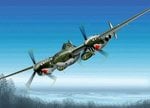wmaxt
Staff Sergeant
Soren,
Quit hedging, After the Merlin was found to be fuel efficient The P-51 was examined to see if some extra fuel could be placed in the aircraft, an Experiment, finding that it could, it was then accepted for escort work. At that point it was built as an escort fighter. There never was an intention. Your statement was that it was designed/intended as an escort fighter was and is incorrect. The H model was intended to be an escort fighter, yes, but is not relevent to this conversation.
The P-51s in 1:1 combat were able to beat the Bf-109 and the Fw-190 on a regular basis. Was it a sure thing - no. It certainly wasn't a sure thing the other way either. My statement was and remains the P-51 was a compettitive fighter, period. The P-51D was still compettitive 600mi from home and you have to be there to be the best.
You have not given any information to contradict my statements just restated your responses with different words. Stating your position many different ways doesn't change anything.
wmaxt
Quit hedging, After the Merlin was found to be fuel efficient The P-51 was examined to see if some extra fuel could be placed in the aircraft, an Experiment, finding that it could, it was then accepted for escort work. At that point it was built as an escort fighter. There never was an intention. Your statement was that it was designed/intended as an escort fighter was and is incorrect. The H model was intended to be an escort fighter, yes, but is not relevent to this conversation.
The P-51s in 1:1 combat were able to beat the Bf-109 and the Fw-190 on a regular basis. Was it a sure thing - no. It certainly wasn't a sure thing the other way either. My statement was and remains the P-51 was a compettitive fighter, period. The P-51D was still compettitive 600mi from home and you have to be there to be the best.
You have not given any information to contradict my statements just restated your responses with different words. Stating your position many different ways doesn't change anything.
wmaxt

